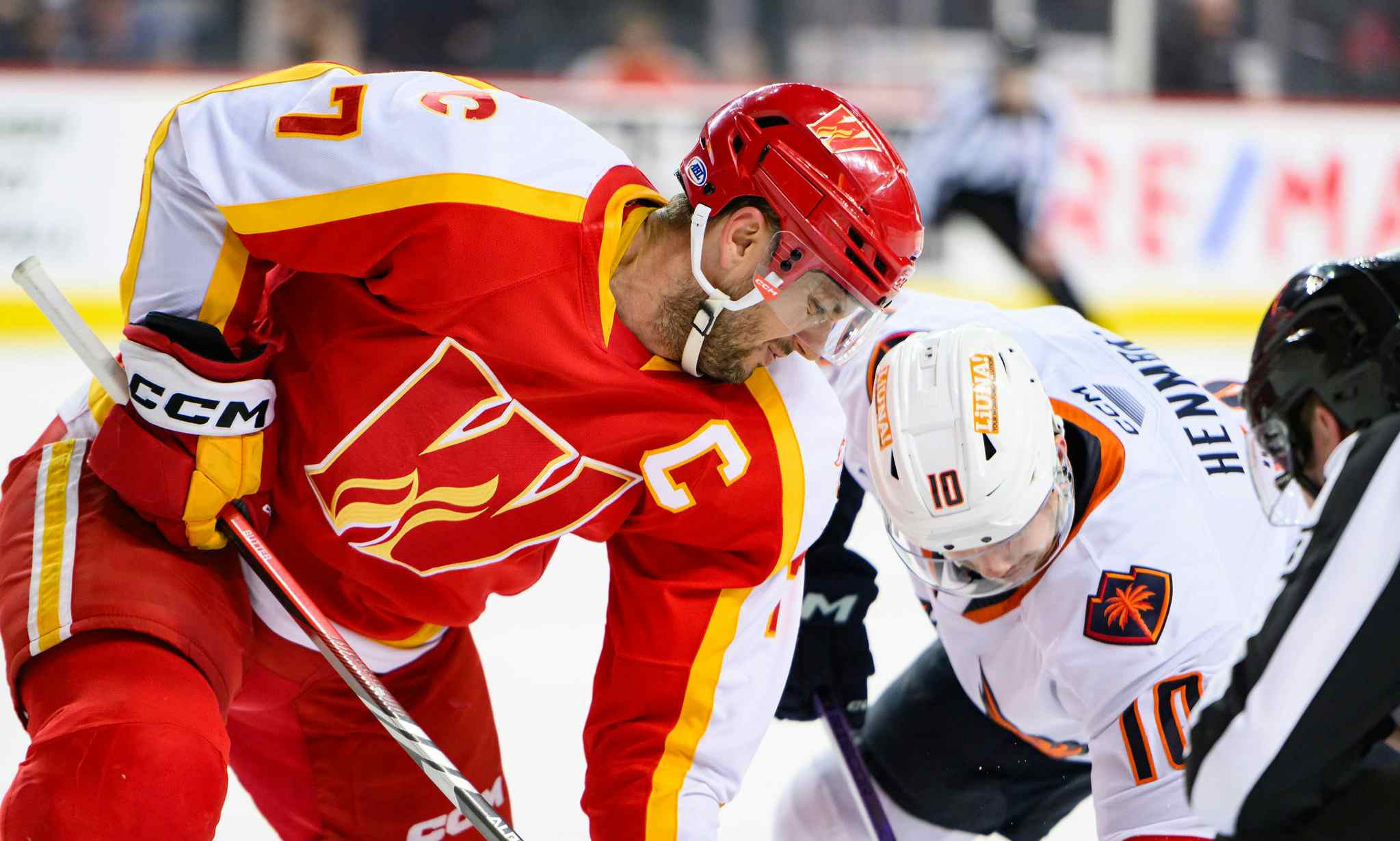Bob Hartley and team shooting percentages
By Ari Yanover
8 years agoSo, if you’re a Flames fan, you’ve heard a lot about shooting percentages over this past season. That’s to be expected: Calgary did, after all, experience an unprecedented amount of success… at the exact same time they saw a great rise in their shooting percentage, all the way up to second in the NHL.
It was last season that saw Bob Hartley win the Jack Adams Award, too. He had a team many predicted would be among the worst in the league, and instead, they made the playoffs. It’s the exact same cause for Patrick Roy to have won the trophy the year before – even though, predictably, the Avs fell off a cliff the following year.
Is the same going to happen to Hartley’s Flames? Or is it possible that what Hartley accomplished last season is repeatable?
It’s all very random
As we saw this past season, there really isn’t a correlation between how good your team is at shooting, and how good it is at winning. The Tampa Bay Lightning were the NHL’s top-shooting team, and they finished fifth in the league; the Flames, meanwhile, were second in line shooting-wise, but finished 16th.
The Chicago Blackhawks went on to win the Stanley Cup, but in the regular season, they were the fifth-worst shooting team in the NHL, and still finished seventh in the overall standings. The New York Rangers had a team shooting percentage of 9.60%, and the Columbus Blue Jackets, 9.59%: one team won the President’s Trophy, and the other never even so much as sniffed the playoffs.
There are a lot of different reasons for this, because hockey is a fairly complex game. On-ice personnel plays a large factor; in particular, goaltending. Some players are just naturally better shooters than others: guys like Alex Tanguay, Jiri Hudler, and maybe even Sean Monahan fall under this category. Luck plays its role, too: in a game as fast-paced as hockey, sometimes weird years just happen.
The same goes throughout all 10 full seasons of Bob Hartley’s NHL coaching career.

Hartley’s top team (and, yes, the Stanley Cup Champion Colorado Avalanche) was a decent shooting team compared to the rest of the NHL, but his best relative shooters – this year’s Flames – didn’t perform that well in the standings. Hell, even one of his worst shooting teams had a pretty good season, finishing fourth in the league.
There’s more correlation when looking at just plain old shooting percentage and comparing it to a team’s place in the standings.

Hartley’s worst shooting team was his worst performing team, while his best was, well, the best. Everything in between isn’t quite as linear, and there are a few outliers, but in general: the more accurate at shooting they were, the better his teams tended to do.
That worst shooting team was the 2013-14 Flames: a 9.19% shooting percentage, and a 27th place finish. One year later, with largely the same personnel, the Flames became a 10.52% shooting team – his fourth-best shooting team ever – and finished 16th.
How did such a poor shooting team become a great one? The real changes to the lineup were Brandon Bollig, Johnny Gaudreau, Josh Jooris, a slightly more experienced Sean Monahan, Mason Raymond, and no more Mike Cammalleri, Brian McGrattan, or Lee Stempniak. Is that enough to affect that great a change?
Brent Sutter vs. Bob Hartley
Brent Sutter coached the Flames for three seasons, and Hartley took over for the next three. The two shared a fair number of players, in particular between the 2011-12 and 2012-13 years.

Hartley has had, overall, the more accurate teams – and the worse ones. Sutter was able to achieve roughly what Hartley did with his editions of the Flames, but he didn’t have to rely on them shooting as accurately in order to do it. Hell, if the Flames, under Sutter, had had as much accuracy and luck as they did under Hartley’s most recent year, the playoff drought may have been broken earlier (and the rebuild may have been delayed even further).
Overall, though, the Flames haven’t been fantastic shooters in recent seasons – just the last one. When they did about as well as Sutter’s teams did.
When the Toronto Maple Leafs made the playoffs in 2012-13, they were the top shooting team in the league, at 11.47%.
The next season, they fell to a less nice 9.69% – and were 23rd in the NHL, under the same coach.
History doesn’t dictate they repeat, and it also kind of dictates they need to. This is where we’ll see just how big an impact the offseason acquisitions really have: if they can help keep this team afloat when it’s not shooting at 10.52% again.
Via QuantHockey – where these numbers are coming from – the average across the league tends to be at about 8.90%. The Flames have been mostly above average, but it’s only really helped them once.
An overall improvement would be ideal… but hey, if they can keep this part up, too, nobody’s going to complain. It just shouldn’t be a factor relied upon, because over the long-term, it doesn’t exactly work.
Recent articles from Ari Yanover





